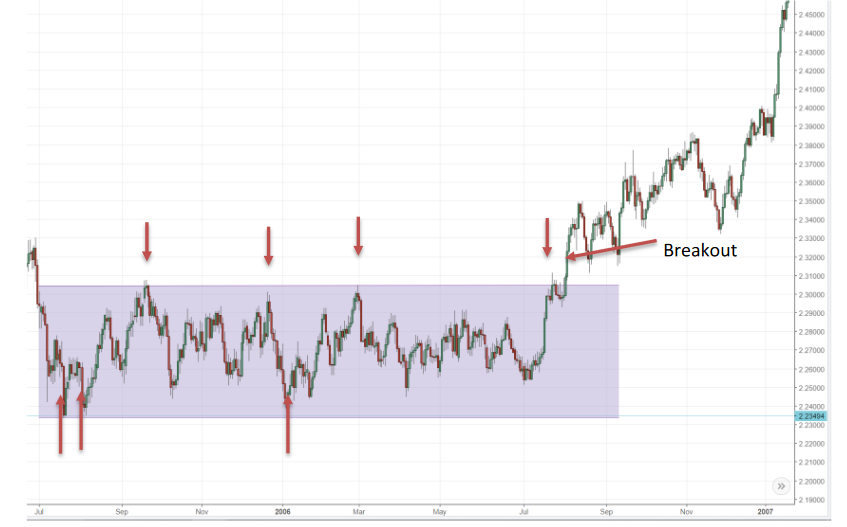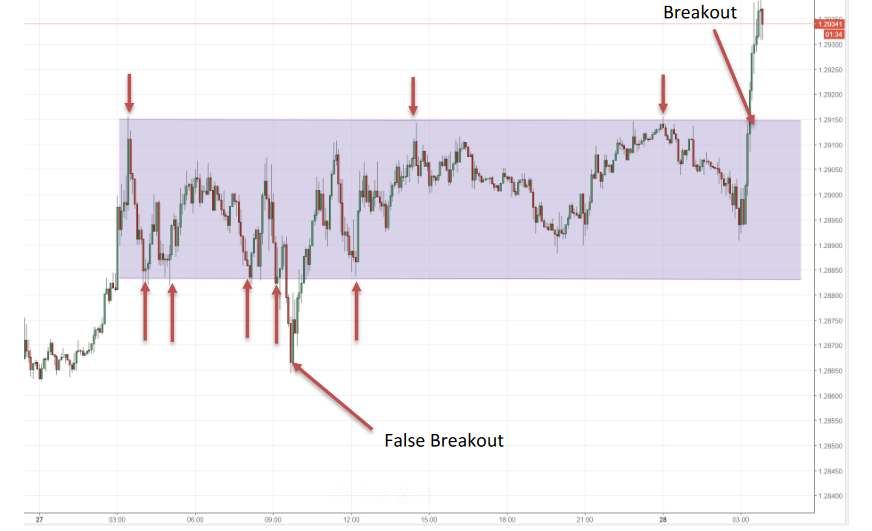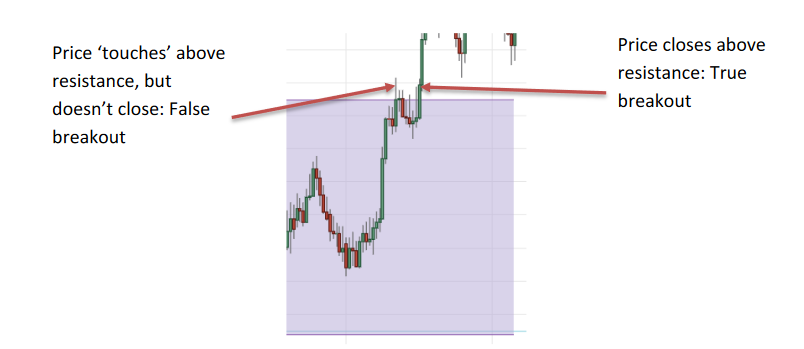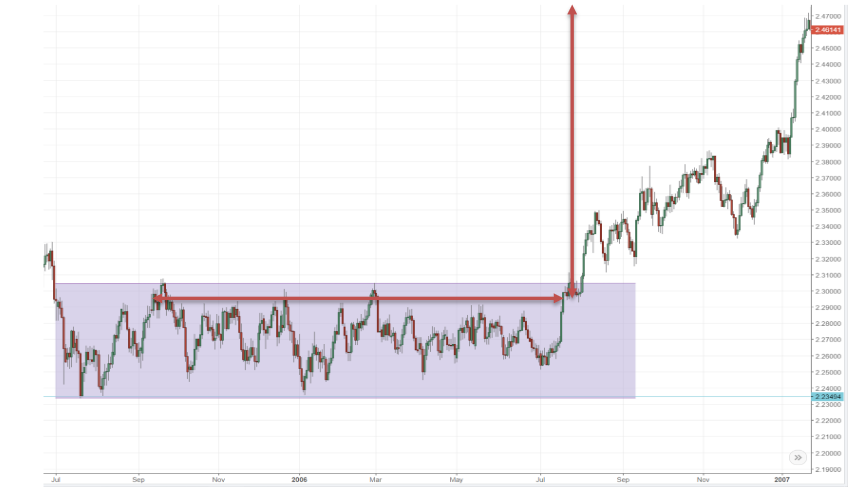Support and Resistance = Consolidation
Consolidation
A consolidation period relies on the same principles as the trend channel, but for a sideways market. The price bounces between a lower support level and an upper resistance level. The consolidation ends when the price moves beyond one of the resistance or support levels. Consolidation occurs when neither the buyers (Bulls) nor the sellers (Bears) are able to win the battle to determine the direction of the trend.
When the price moves near the lower support, the price appears cheaper to buyers who view this as a good opportunity to go long (buy). The price then begins to go up and people who were selling take their profit by buying back their position. This adds further to the buying action, causing the price to increase further.
When the price moves near the upper resistance, the price appears expensive to sellers, who view this as a good opportunity to go short (sell). The price then begins to go back down and the people who were buying take their profit by selling their position. This adds further to the selling action, causing the price to go down further, and the process starts all over again.
This can continue for long periods of time until finally either the buying interest or selling interest is sufficient to overwhelm the other and one of the resistance levels is broken. The longer a consolidation period is, the stronger these support and resistance levels become and the more powerful the subsequent move.
The example below is forthedaily time frame for GBPCHF in 2006.

These patterns are powerful and occur on any timeframe. Another example below is for GBPUSD on the 28th of April 2017 but on the 5-minute chart instead of the daily. Note how sometimes the price can sometimes breakout, then retrace back into the consolidation range. This is known as a ‘false break’.

It is important to acknowledge that false breakouts do occur and consequently no pattern is ever a ‘sure thing’. Nonetheless, these are a powerful indicator of potential trends and can be traded profitably. Below are some rules for trading breakouts from consolidation.
1)The longer the consolidation, the more significant the breakout and the larger the potential move that follows.
2)After a breakout occurs, the market often retraces back to the breakout resistance or support level, but it is unlikely the price will move back into the consolidation zone. If it does, this is known as a false breakout.
3)The price must close above/below the resistance/support on whichever timeframe you are trading. If for instance, you are trading the daily time frame, it is not sufficient for the market to just go higher than the breakout level during the day, the market has to close above the level. The difference will be obvious on the chart: it is the difference between the top/bottom of the candle tail going above/below the level and the coloured block finishing above/below the level. Using this rule helps avoid a lot of false breakouts.

4)When placing your stop, place it below or above the breakout point, but allow some distance. It is a common mistake to place the stop just below/above the breakout level. Then, if the price retrace even slightly, the position is stopped out and the move is missed.
5)When the market breaks out from consolidation, it will roughly move up or down by distance equal to the horizontal consolidation phase. Obviously, this is nota hard and fast rule, so some judgement is required but it is a useful rule of thumb. This holds true on the example below.
